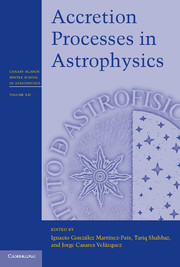Book contents
- Frontmatter
- Contents
- List of contributors
- List of participants
- Preface
- Acknowledgments
- Abbreviaions
- 1 Accretion disks
- 2 The evolution of binary systems
- 3 Accretion onto white dwarfs
- 4 Multiwavelength observations of accretion in low-mass X-ray binary systems
- 5 X-ray binary populations in galaxies
- 6 Observational characteristics of accretion onto black holes I
- 7 Observational characteristics of accretion onto black holes II: environment and feedback
- 8 Computing black-hole accretion
- A Piazzi Smyth, the Cape of Good Hope, Tenerife, and the siting of large telescopes
- References
4 - Multiwavelength observations of accretion in low-mass X-ray binary systems
Published online by Cambridge University Press: 05 January 2014
- Frontmatter
- Contents
- List of contributors
- List of participants
- Preface
- Acknowledgments
- Abbreviaions
- 1 Accretion disks
- 2 The evolution of binary systems
- 3 Accretion onto white dwarfs
- 4 Multiwavelength observations of accretion in low-mass X-ray binary systems
- 5 X-ray binary populations in galaxies
- 6 Observational characteristics of accretion onto black holes I
- 7 Observational characteristics of accretion onto black holes II: environment and feedback
- 8 Computing black-hole accretion
- A Piazzi Smyth, the Cape of Good Hope, Tenerife, and the siting of large telescopes
- References
Summary
Abstract
This work is intended to provide an introduction to multiwavelength observations of low-mass X-ray binaries and the techniques used to analyze and interpret their data. The focus primarily is on ultraviolet, optical, and infrared observations and their connections to other wavelengths. The topics covered include outbursts of soft X-ray transients, accretion disk spectral energy distributions, orbital light curves in luminous and quiescent states, superorbital and suborbital variability, line spectra, system parameter determinations, and echo mapping and other rapid correlated variability.
4.1 Introduction
The first X-ray binary to be observed and identified as such was Scorpius X-1 (Giacconi et al., 1962), although several other systems were known as optical stars or novae before this. Within a few years, optical and radio counterparts to Sco X-1 were discovered (Sandage et al., 1966; Andrew and Purton, 1968), and the topic has remained multiwavelength in nature since then.
This work is intended to provide an introduction to some of the observational characteristics of X-ray binaries suitable for a graduate student or an advanced undergraduate. My aim was to produce a primer for someone relatively new to the field rather than a comprehensive review. Where appropriate, I also discuss techniques for analysis and interpretation of the data. The focus is almost exclusively on low-mass X-ray binaries, in which the accretion disk is most accessible to multiwavelength observations, and is predominantly biased toward ultraviolet, optical, and infrared observations and their relation to observations at other wavelengths. For a textbook treatment of accretion astrophysics in general, the reader is referred to Frank et al. (2002) and for more comprehensive reviews of X-ray binaries to Lewin et al. (1995) and Lewin and van der Klis (2006).
- Type
- Chapter
- Information
- Accretion Processes in Astrophysics , pp. 117 - 150Publisher: Cambridge University PressPrint publication year: 2014



